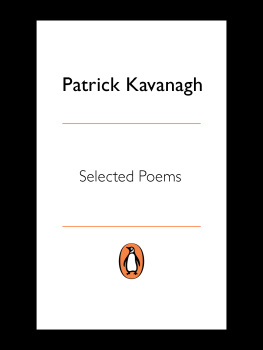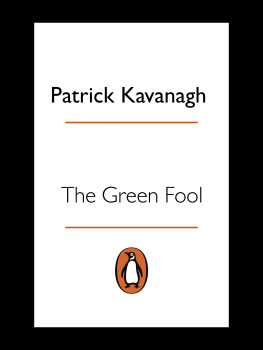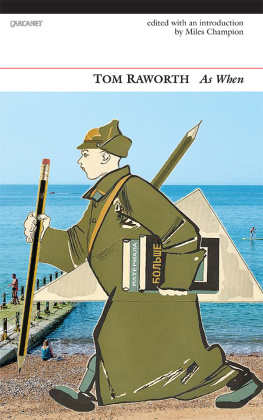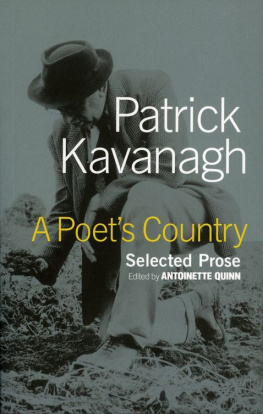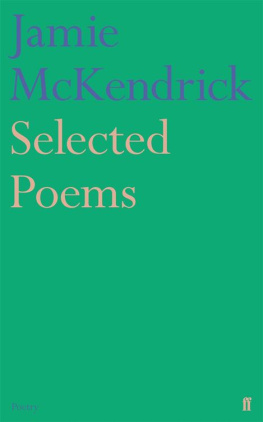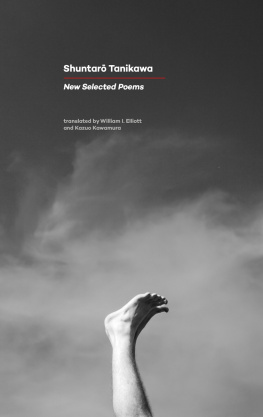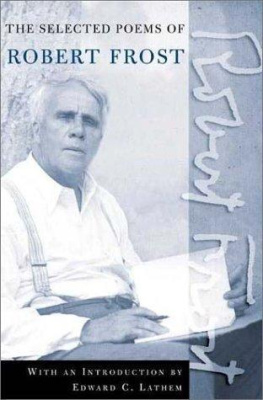

Contents
Patrick Kavanagh
SELECTED POEMS
EDITED BY ANTOINETTE QUINN

PENGUIN BOOKS
UK | USA | Canada | Ireland | Australia India | New Zealand | South Africa Penguin Books is part of the Penguin Random House group of companies whose addresses can be found at global.penguinrandomhouse.com
First published 1996 Reprinted in Penguin Classics 2000 Copyright 1929, 1930, 1935, 1936, 1937, 1938, 1939, 1940, 1941, 1942, 1943, 1944, 1945, 1946, 1947, 1949, 1950, 1951, 1953, 1954, 1955, 1956 By Patrick Kavanagh; copyright Patrick Kavanagh, 1958, 1959, 1960, 1962, 1963, 1964, 1965; copyright Katherine B. Kavanagh, 1972, 1978 Introduction and notes copyright Antoinette Quinn, 1996 All rights reserved The moral right of the editor has been asserted ISBN: 978-0-241-38065-9
PENGUIN BOOKS
PATRICK KAVANAGH: SELECTED POEMS
Patrick Kavanagh was born in Inniskeen, County Monaghan, in 1904, the son of a cobbler-cum-small farmer. He left school at the age of thirteen, apparently destined to plough the stony-grey soil rather than write about it, but I dabbled in verse, he said, and it became my life. He was discovered by the Literary Revival veteran, AE (George Russell), in 1929 and his poems began to appear in Irish and English journals. In 1936 his first book of verse,
Ploughman and Other Poems, was published, and in 1938 he followed this up with
The Green Fool, an autobiography. He spent the lean years of the war in Dublin, where
The Great Hunger was published in 1942.
After the war he published the novel Tarry Flynn (1948) and two further collections of verse: A Soul for Sale (1947) and Come Dance with Kitty Stobling (1960). The bulk of his verse was included in his Collected Poems, and some of his prose in Collected Pruse. He died in 1967 and is buried in his native Inniskeen. Antoinette Quinn is the author of Patrick Kavanagh, Born-Again Romantic (1990), a critical study of Kavanaghs poetry and prose. She has edited The Figure in the Cave and Other Essays by John Montague (1989) and has published many essays on modern Irish literature. She is a Fellow of Trinity College, Dublin, where she is a Senior Lecturer in the School of English. B. B.
Yeatss magisterial Blood and the Moon, composed just before the closing decade of his life, and Patrick Kavanaghs brief naf lyric My Room, written at the outset of his career. Home for W. B. Yeats was Thoor Ballylee, the Norman tower in County Galway which he had transformed into both a family residence and a complex imaginative symbol, Blessed be this place, More blessed still this tower; A bloody, arrogant power Arose from the race Uttering, mastering it, Rose like these walls from these Storm-beaten cottages I declare this tower is my symbol; I declare This winding, gyring, spiring treadmill of a stair is my ancestral stair; That Goldsmith and the Dean, Berkeley and Burke have travelled there In My Room Patrick Kavanagh, one of the recently decolonized rural Catholic poor, was, unwittingly, writing back from the cottage to the tower, humorously and optimistically taking stock of his cramped conditions and meagre resources: 10 by 12 And a low roof If I stand by the side wall My head feels the reproof. Five holy pictures Hang on the walls The Virgin and Child St Anthony of Padua St Patrick our own Leo XIII And the Little Flower. My bed in the centre So many things to me A dining table, A writing desk, A couch, And a slumber palace.
My room is a musty attic But its little window Lets in the stars. It would have been difficult for a reader in 1933 to predict that the obscure author of these primitive verses could ever turn such disadvantaged material circumstances to literary advantage. With hindsight, it is possible to observe that Kavanagh was already opening a little window into a previously occluded lyrical space, for the Catholic underclass which constituted the majority of the Irish Free States population had not previously considered its domestic or interior life a worthy topic for poetry. Read together, Yeatss lines and Kavanaghs represent a post-colonial turn in Irish verse: Yeats imaginatively empowering a disempowered colonial caste and proclaiming himself its artistic and intellectual heir; Kavanagh ignoring recent political upheavals and taking his bearings in the here and now, flaunting the association between his verse and the popular iconography of Catholic Ireland, tawdry and tasteless to the eye of artistic orthodoxy. To those who read no further, Kavanagh might have appeared a Caliban to Yeatss Prospero. And in more pessimistic moments he himself doubted his capacity to progress from the status of under-educated, impoverished yokel to the achievement of authorial authority: I have not the fine audacity of men Who have mastered the pen Or the purse.
The complexes of many slaves are in my verse. When I straighten my shoulders to look at the world boldly I see talent coldly Damning me to stooped attrition. Mine was a beggars mission. To dreams of beauty I should have been born blind From such inauspicious beginnings, however, Patrick Kavanagh would evolve into an exemplary post-Independence poet, liberating Anglo-Irish poetry from the political role assigned to it since the middle of the nineteenth century as an agent of nationalism or cultural separatism. For the fact of Independence had not freed this poetry from its longstanding obsession with history, mythology, folklore and the translation and adaptation of Irish-language verse, from what Samuel Beckett characterized as the entire Celtic drill of extraversion whereby the personal was happily obliterated in the national interest. With some isolated exceptions, Anglo-Irish poets were still programmed by an ethnic aesthetic.
Like Derek Walcott after him, Kavanagh exhorted his post-Independence fellow-writers to escape into a historyless world, a world [that] began this morning, to see their surroundings with fresh eyes and to engage in an Adamic naming of place. Naming was, for Kavanagh, a love-act and nothing whatever is by love debarred. Celebration of the ordinary trivia of the poets daily milieu was to be substituted for the recycling of Gaelic literature and folklore. The affectionate portrayal of The everydays of nature or The life of a street was to replace totalizing, nationalist symbols of a monolithic Ireland. The rhythms and idioms of contemporary vernacular speech were to take over from the cultivation of an Hiberno-English diction and the adaptation of Gaelic poetic techniques. To try to be more human was Kavanaghs exhortation to fellow-poets who were still striving to be more Irish.
Seamus Heaney has coupled Kavanagh with Yeats as the most influential figures in the modern Anglo-Irish poetic canon: Yeats, the architectural visionary, mythologist and mage, intent on constructing a well-wrought oeuvre; Kavanagh, dismissive of system or plan (Yeatsian invention), opting for a relaxed, casual stance, a momentary benediction of things common and banal. Irish poetry needs both these antithetical modes, Heaney concludes. Despite a decades overlap in their two careers, Yeats knew of Kavanagh only by hearsay as one of a number of Irish singing-birds discovered by his friend AE (George Russell).
Next page
